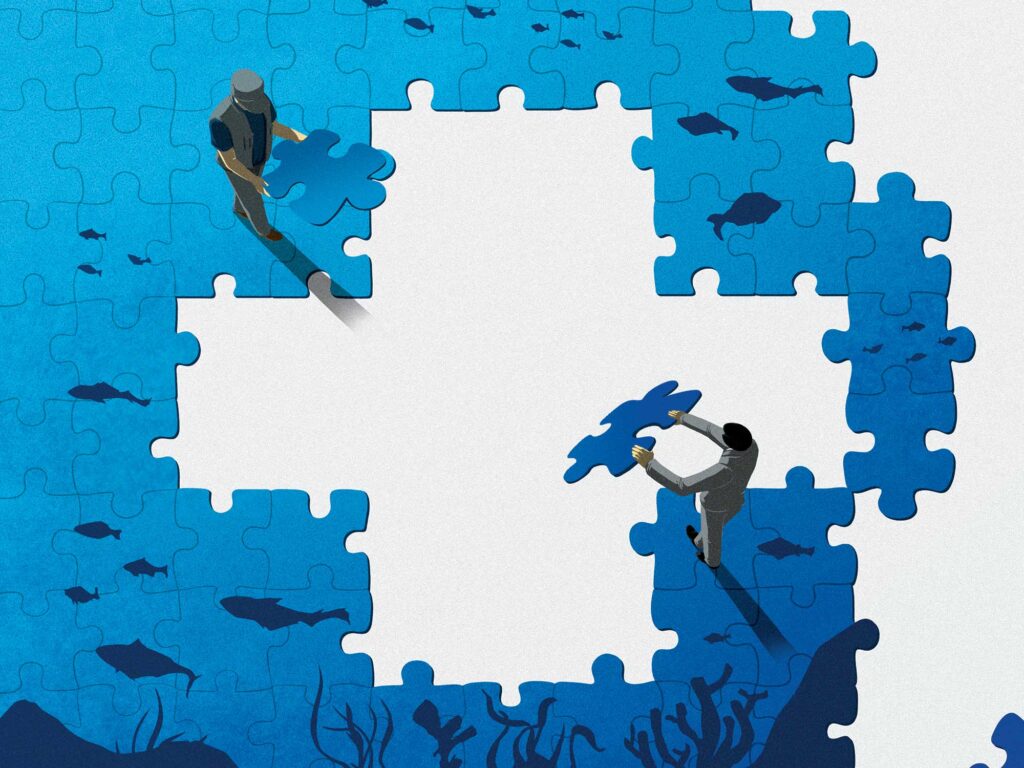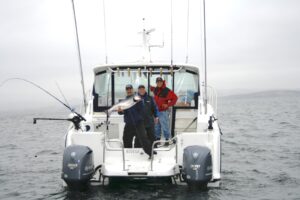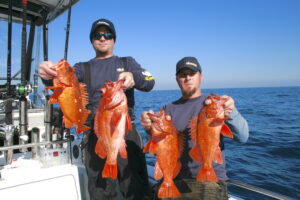
I’ve been an angler for nearly 50 years, since I was 6 or 7 years old. I got into fishing for the same reasons others do: the chase, the fight, the reward, the experience. As I was developing my passion for fishing, my home waters around the Great Lakes were experiencing extreme environmental degradation, pollution and habitat destruction. So, when I got to high school in the early ’80s and was looking for direction, I gravitated to a career path focused on fish and their conservation. I wanted to learn about solutions aimed at reducing human impacts on fish and their ecosystems. After high school, I found undergraduate and grad programs where I could dive deep into fish biology, ecology and fisheries management.
Early on it was taught that fisheries management is centered around the concept that fish are a “common pool resource,” essentially public property. This creates competition for those resources and can end in a race to take the most fish, so overharvesting occurs. Humans are intrinsically greedy, according to this theory. This is why top-down controls—such as catch limits, harvest quotas and size limits—were introduced and became the cornerstone of fisheries management. These ideas make sense because we don’t manage fish, we manage the people using the resource.
Also back in the day, nearly all the management concepts being taught focused on commercial species, though there was mounting evidence these strategies weren’t preventing overharvest. Much of classical fisheries management is based on the notion of surplus production. This theory is founded on the idea that, due to their biology, there are more fish than what’s needed to maintain the population, and this surplus of adults produces a surplus of young. Therefore, a proportion of adults can be taken without impacting the future of the population (and, of course, future harvest).
If you add the concept of surplus production to top-down controls, we should be able to harvest plenty of fish while protecting enough of the population to buffer against declines. Seems logical, right? But a lot of the data utilized in the mathematical models that inform top-down controls are estimates, such as abundance, reproductive rates, even harvest rates. This means there will always be some level of uncertainty associated with how effective these controls are. Nevertheless, to this day, top-down controls in commercial fisheries are still common and make sense because they are enforceable.
But what about recreational fisheries? Although fishing for leisure has been popular for a very long time, it wasn’t until the early 2000s that we began to realize it can have considerable impacts on fish populations. A rather pivotal scientific paper I read early in my career highlighted the “invisible collapse” of recreational fisheries. Because we weren’t monitoring recreational fisheries to the same extent as commercial ones, we were blind to the fact that angler effort (number of anglers, hours on the water, etc.) was going up and catch rates going down, which is never a good sign. Examples in the paper were water bodies where there were only recreational fisheries, so there wasn’t any commercial harvest to implicate as the source of the problem—a common refrain up until that point. This turning point in fisheries science allowed me to mesh my passion for fishing with my academic pursuits, to do what I could to find solutions for the conservation and management of recreationally targeted fish species.
It didn’t take long to realize how intricate recreational fisheries are, often referred to as complex social-ecological systems. One layer of complication arises because many of the same top-down controls used for commercial fisheries are used in recreational fisheries—size limits, seasons, bag limits, etc.—but the enforcement of such regulations is more difficult. There are so many anglers fishing in so many places, targeting so many species, and using a wide range of gear that it becomes exceedingly difficult for enforcement to keep up. In fact, I can recall only one time in the past 10 years when I was approached by a fisheries officer to show my license. Does this mean that compliance is an angler’s choice, made by weighing the pros and cons of abiding by the regulations?
Another important distinction with recreational fisheries is that not all fish are harvested. Estimates suggest that nearly 60 percent of fish that anglers catch in the US and Canada are released, whether because of those top-down controls, the wrong species, or a growing ethos where fish are voluntarily released. What science has also shown is that the fate of released fish is largely determined by how they are caught and handled, and even subtle changes in angler behavior can increase the chances of fish surviving after release. There has been a lot of science focused on how fish respond to capture and handling, and these results are being translated into actions or “best practices” that anglers can use to reduce their impacts on the fish they let go.
Yet many of these best practices might not work as top-down controls because they are even more difficult to enforce than conventional regulations. Heck, even if these practices are employed—like in Florida, where it is illegal to take tarpon greater than 40 inches out of the water because it dramatically reduces survival—they are not always abided. There are still posts on social media with big tarpon in Florida being hoisted up for a hero shot.
Read Next: Where’s the Data for Making Changes to California’s Halibut Regulations?
If you haven’t already guessed, this is why bottom-up, grassroots efforts are also needed to create sustainable futures for recreational fisheries. Peer pressure to follow regulations as well as changing social norms or what’s considered acceptable when handling fish intended for release must complement any use of top-down controls. Regulations won’t go away, but as we have seen in the case of the striped bass fishery along the US Atlantic coast, even changing regulations to keep up with declining stocks can be slow, too little too late, and politically charged.
Sure, it gets especially complicated when species are the focus of recreational and commercial fisheries. But at the end of the day, it will take grassroots effort by anglers to lobby for better top-down controls, and for those same anglers to learn, use and share science-based best practices for handling and releasing fish to ensure more of those fish survive. In fact, as our precious target species face fast-moving environmental challenges, such as climate change, creating more resilient recreational fisheries can hinge more on bottom-up efforts because the inertia of management and policy change might not be able to keep up.









